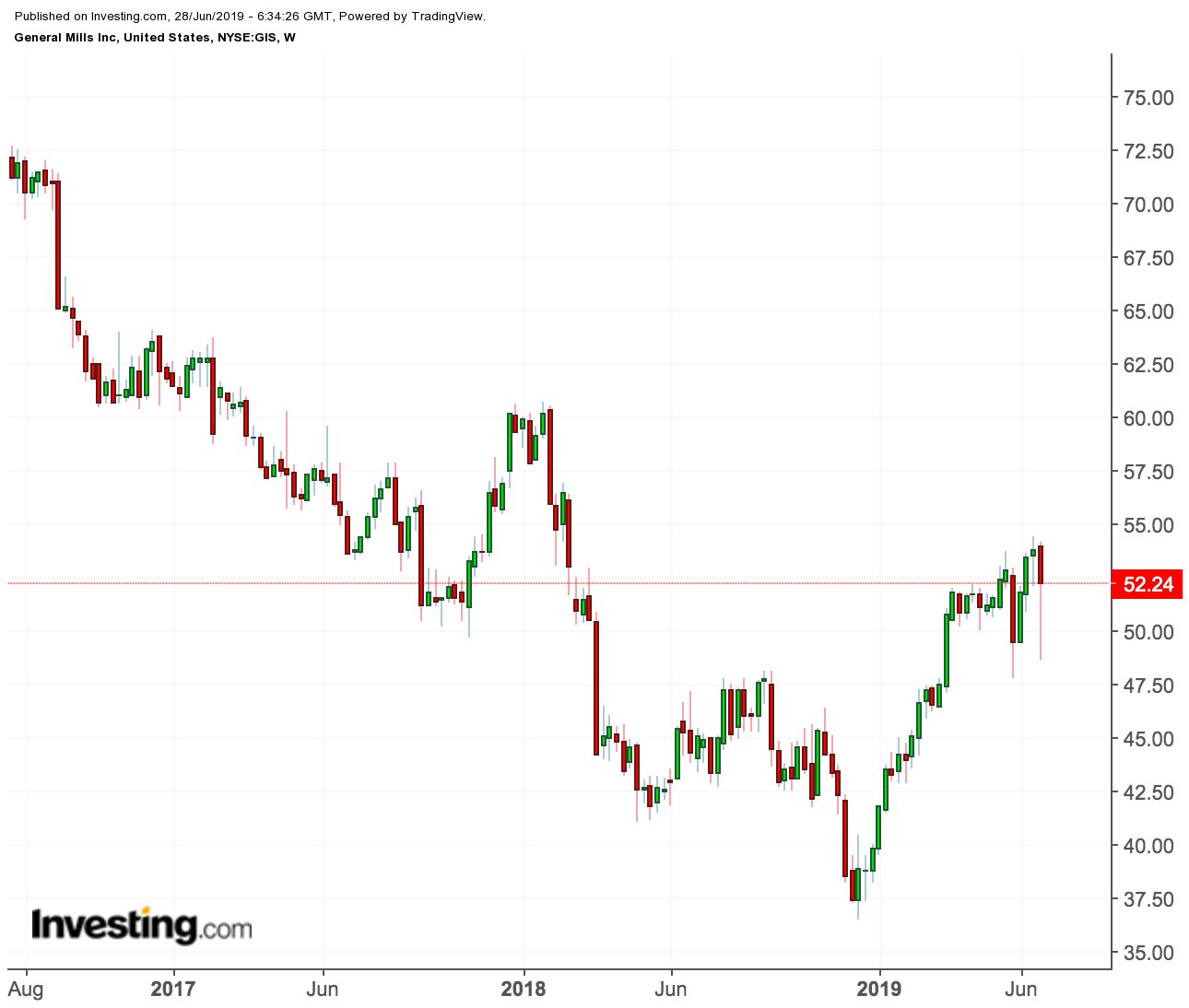After an impressive rally, the shares of General Mills (NYSE:GIS) are coming under pressure after the food giant’s fourth-quarter earnings report that gave mixed signals about the company’s future growth. And, in our view, bulls have a valid reason to get confused.
The challenge for the maker of Cheerios Honey Nut cereal, Yoplait yogurt and Nature Valley granola is quite daunting: It has to accelerate growth in an era when consumers are rapidly changing their eating habits, looking for fresher, greener and less sugary food.
The company’s Q4 earnings show the path ahead is likely to be uneven despite General Mills’ latest effort to diversify its revenue base. Investors sent the company’s shares tumbling 4.5% on Wednesday after it reported that sales—excluding the effects from currency fluctuations and acquisitions—fell in its fiscal fourth quarter and were flat for the year. The stock recouped some of those losses yesterday, rising 1.8% to close at $52.22.
The company’s North America business, its largest, was the main contributor to 4Q's sluggishness, with the unit’s sales falling 2% to $2.34 billion. Sales of cereals, yogurt and meals and baking items were flat, the company said. Snack sales declined as Fiber One bars and Nature Valley granola bars lost grounds.
Dashed Hopes
Before this weak performance, investors were generally excited about GM, as evident from the stock’s 40% rise this year, on hopes that last year’s acquisition of the maker of Blue Buffalo pet food, its largest deal in 18 years, would add a new growth avenue to the company’s portfolio at a time when its traditional food unit is under pressure.

CEO Jeff Harmening, who is steering the company in this challenging environment for packaged food producers, tried to accelerate growth by rolling out trendy items, such as cereal that uses a wild grain related to wheat and new variations of its other popular cereal brands.
But some analysts now believe that the positive impact of these efforts is already baked into the stock price, which is trading close to its 52-week high, and future gains will depend on the company’s innovations and its ability to fight disruptors such as Amazon.com (NASDAQ:AMZN), which is investing heavily to grab the major share of consumer grocery spending through its Whole Foods brand.
Goldman Sachs analyst Jason English downgraded the stock in May, predicting an inevitable slowdown following improvement in the company's core business and the impact of its acquisition of Blue Buffalo.
General Mills is entering a "second chapter of mounting deceleration concerns among investors," English said in a note to clients, noting the first chapter of enthusiasm has now "largely played out." He also reduced his price target to $41 a share.
For the fiscal year ending in 2020, the company guided investors to expect organic sales growth of 1-2%, but much of this will come from Blue Buffalo, which it projects will grow by 8-10%. Part of this growth will come from its legacy categories, helped by some uptick in snack bar volumes, the company said.
Bottom Line
Even with the powerful 2019 rally, General Mills stock is down about 30% from its 2016 peak. There are clear signs that the surge that followed the Blue Buffalo acquisition is losing steam and investors are again zeroing in on General Mills' legacy businesses amid growing pressure from upstart competitors. That being said, the investments the company has made to accelerate growth have positioned it to perform better than its peers in this downturn for processed food stocks.
For those who have an eye on the company’s 3.5% dividend yield, there will likely be a better entry point to buy this stock. For now, we don’t find the valuation compelling enough, especially as the management hasn't demonstrated any new growth catalysts.
